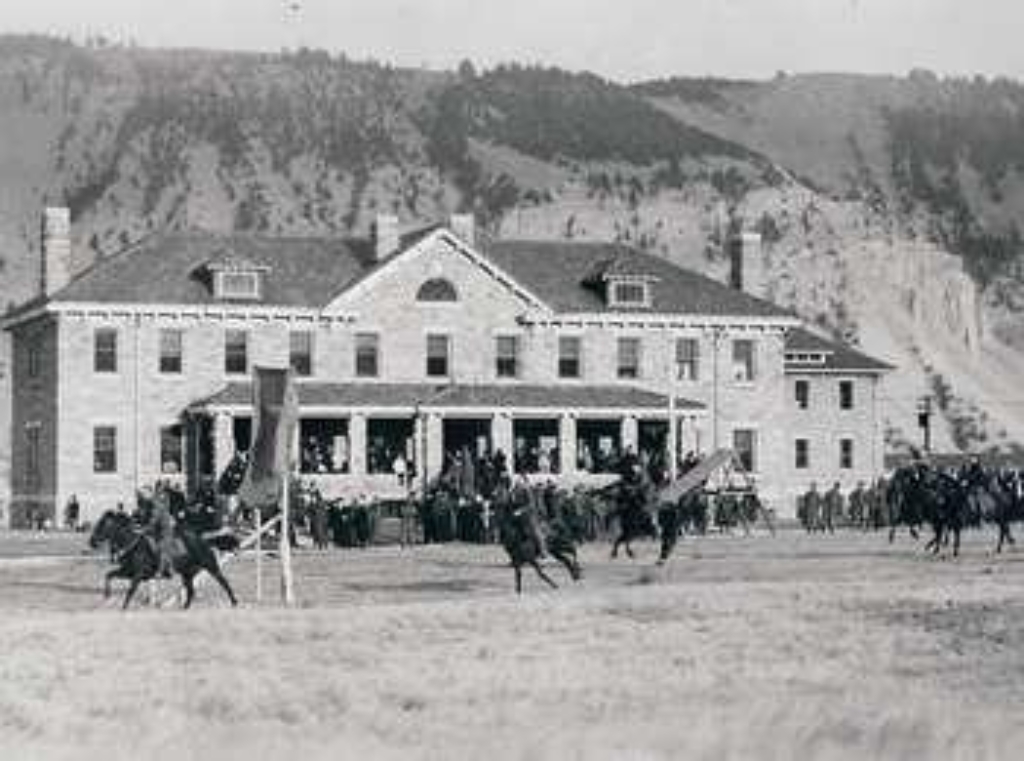
This 0.3-mile (0.5-km) self-guiding trail on sidewalks has nine stops with exhibits. The trail takes approximately 45 minutes at a leisurely pace.
The exhibits describe life in Fort Yellowstone when the US Army administered the park from 1886 through 1918. Significant conservation policies were developed here that lead to the origin of the National Park Service.
Watch for traffic. Do not approach wildlife.
Many buildings along the trail are employee residences and are not open to the public. Please respect the privacy of residents by staying on the paved route and treating living areas with courtesy.
The trail begins at the Albright Visitor Center, which was the bachelor officers' quarters, completed in 1909. It had an officer's mess or club, kitchen, sitting room, and apartments for six single officers.
Yellowstone's First Ten Years
For the first decade after Yellowstone National Park was established in 1872, the park was under serious threat from those who would exploit, rather than protect, its resources.
Poachers killed animals. Souvenir hunters broke large pieces off the geysers and hot springs. Developers set up camps for tourists near hot springs, along with bath and laundry facilities in the hot springs.
In response, civilian superintendents were hired to preserve and protect the new park. Their experience and intentions varied, and they were all under-funded and under-staffed.
Word reached Congress that the park was in trouble, but legislators refused to appropriate money for the park's administration in 1886.
The Army Arrives
The Secretary of the Interior, under the authority given by Congress, called on the Secretary of War for assistance. In 1886, men from Company M, First United States Cavalry, Fort Custer, Montana Territory, came to Yellowstone under the command of Captain Moses Harris.
Over the next 32 years, the Army strengthened, posted, and enforced regulations in the park. Troops guarded the major attractions and evicted troublemakers, and cavalry patrolled the vast interior.
Accessibility
The route has some potential hazards where the concrete sidewalk has buckled (up to 1.5" high) or has large gaps at expansion joints.
The concrete sidewalk is cracked or deteriorated in some places.
Side slope may be up to 6% in places along Officer's Row. The sidewalks between the Albright Visitor Center and the Administration Building (originally double cavalry barracks) have 10-12% slopes.
The audio description describes the wayside exhibit.
Is there something we missed for this itinerary?
Itineraries across USA


















































